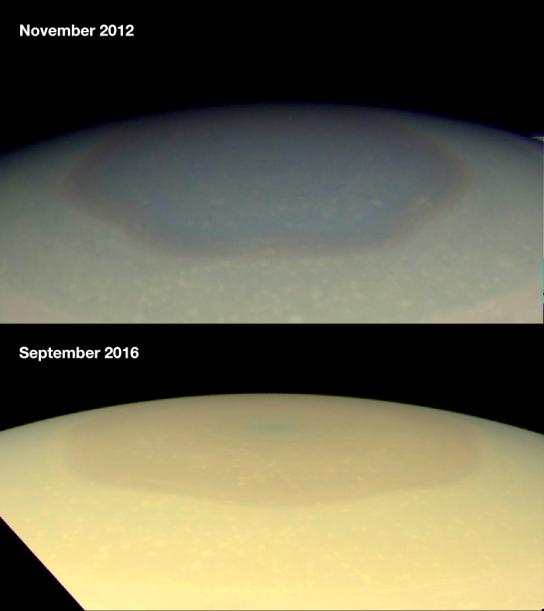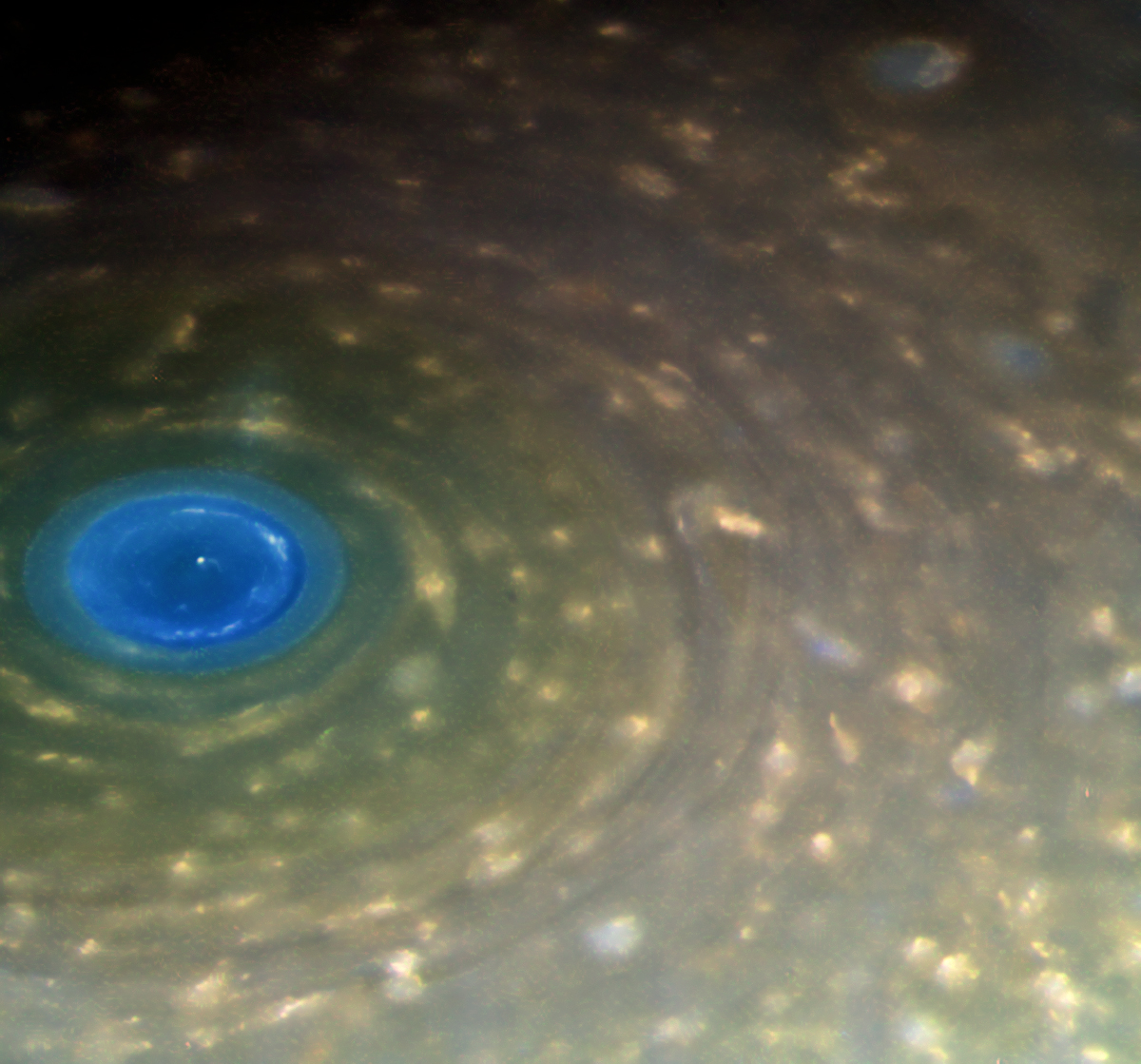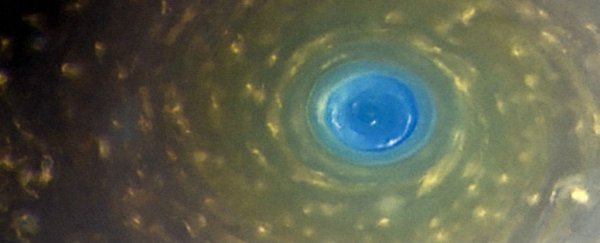After more than a decade orbiting Saturn and its many moons, NASA's Cassini spacecraft is getting ready to plunge into the ringed planet's upper atmosphere and put a fiery full-stop on the mission that gave us this madness.
NASA is giving us a preview of this 'Grand Finale' right now, as key scientists discuss the final movements of the Cassini spacecraft live on NASA TV.
According to NASA, today's live press conference will involve laying out the plans for Cassini's final suicide mission, which will involve a flyby of Saturn's moon Titan on April 22, followed by 22 weekly dives through an unexplored gap between the planet and its rings.
The first of these dives is planned for April 26, and after those dives are completed, Cassini will plunge into Saturn's upper atmosphere on September 15.
Members of the public are encouraged to ask questions during the briefing on Twitter using the hashtag #askNASA, and you can watch the live stream at NASA TV now.
For a bit of background into this record-breaking mission, the Cassini spacecraft launched in 1997, with the aim to study the planet, its rings, and moons.
Over more than a decade, this unassuming space probe has discovered seas of liquid methane on Titan, and jets of ice and water vapour gushing from Enceladus - two of Saturn's 62 moons.
We've seen these mind-blowing images of Saturn's famous rings, the closest-ever photo of a moonlet hiding between them, and this adorable dumpling of a moon, Pan.
And perhaps most strange of all, thanks to Cassini, we've seen Saturn's crazy polar vortex change from blue to golden and back to blue again, in one of the most bizarre transitions we've witnessed in space to date:
 NASA/JPL-Caltech/Space Science Institute/Hampton University
NASA/JPL-Caltech/Space Science Institute/Hampton University
Saturn's polar vortex, which spins around its north pole at speeds of 321 km/h (200 mph), is a six-sided structure that spans roughly 32,000 km (20,000 miles) in diameter, and extends about 100 km (60 miles) down into the planet's dense atmosphere.
Based on its size and movements, scientists have concluded that it's a vast cloud pattern generated by a gigantic, perpetual hurricane spinning at the centre of the planet's north pole - something we've never seen anywhere else in the Universe.
By some estimates, this storm has been raging for decades - maybe even centuries.
But how did it just change colours like that?
In late 2016, researchers put forward their best hypothesis, suggesting that the colours represent the transition of seasons - with a year that lasts 29 Earth years, Saturn changes seasons only once every seven years.
The idea was that the increased sunlight over the past three years gave rise to 2016's golden haze.
As NASA explained at the time:
"The colour change is thought to be an effect of Saturn's seasons. In particular, the change from a bluish colour to a more golden hue may be due to the increased production of photochemical hazes in the atmosphere as the north pole approaches summer solstice in May 2017."
Fast-forward to now, and it looks like the blue centre of the vast golden vortex has gotten even brighter in recent months, according to raw data that was posted to Cassini's image archive on April 1.
This data set provides information on the visible-light colour channels that the space probe picked up, and when space enthusiast Jason Major plugged these quantities into Photoshop, it revealed the true colour of the vortex's dynamic centre:
Cassini just got another view of the 1,800-mile-wide vortex at #Saturn's north pole and holy $#!& just look at it pic.twitter.com/GMv5scXBbr
— Jason Major (@JPMajor) March 31, 2017
"If I see something interesting and it also happens to have been captures in visible-light colour channels, I assemble a colour version in Photoshop to see what the awesome level is," Major told Maddie Stone at Gizmodo. "That vortex pic was a 10."
Here's another look at that bright blue dot:
 NASA/JPL-Caltech/SSI/Jason Major
NASA/JPL-Caltech/SSI/Jason Major
To be clear, Major is not affiliated with NASA, so we'll have to wait for NASA to release its own coloured versions of the Cassini raw data to confirm what we're seeing.
But as Stone discovered at the American Geophysical Union's annual conference in San Francisco last December, that vortex centre is 100 percent cerulean right now.
And the correct response to that is what astrophysicist Katie Mack gave us on Twitter:
THERE IS A POLAR VORTEX ON SATURN THAT IS **BLUE** JUST FYI https://t.co/Si1d90uq0v https://t.co/ALGqGYrSph
— Katie Mack (@AstroKatie) March 31, 2017
Watch NASA discuss Cassini's fiery swan song at NASA TV now.
